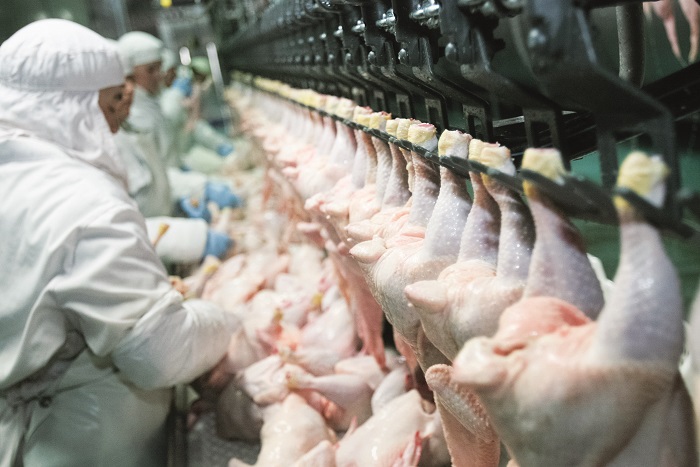A new scientific study into food washed with chlorine has found the process doesn’t kill contaminants, but merely makes them impossible to culture in a lab.
The findings, made by a team of microbiologists from Southampton University and published in the US journal mBio, found that bacilli such as listeria and salmonella remain after chlorine washing. The technique is used by some US poultry processors, and has raised fears about whether a potential US UK trade deal following Brexit would pave the way for poultry produced in such a way to enter the UK market.
The American poultry industry is far less regulated compared to Europe, meaning flocks are kept at higher densities and infection rates are higher. Chlorine washing is used at the end of the process to clean carcasses.
“The US vigorously champions chemical washes,” said Richard Griffith, the chief executive of the British Poultry Council. “But this hides the shortcomings in their production methods and belies their attitude both to food safety and being open with consumers. It seems that the US, even with growing scientific evidence, is still trying to offload food on us of higher risk and lower quality than our own.”
Tom Super of the National Chicken Council denied the technique was ineffective. “We export product safely to more than 100 countries around the globe,” he said. “We’ve been feeding the same chicken to our families for decades. This has never been an issue of science, rather one of politics and protectionism.”


